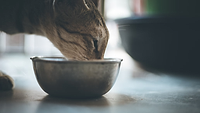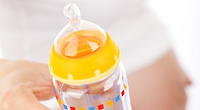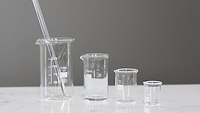Certain Raw Pet Foods Put UK Dogs at Risk of Lead Exposure Due to Ammunition Residues

Credit: Real Natures Food via Unsplash
A recent study out of the UK has revealed that raw dog food containing pheasant meat may pose a health risk to pets due to the presence of high lead concentrations caused by ammunition used to hunt game. With the popularity of raw pet food in the UK on the rise, the numbers of pets at risk for lead exposure could be high.
Although most uses of lead have been phased-out or regulated in high-income countries, it remains in common use globally as the principal element in shotgun pellets and bullets (shot). While passing through the tissues of game animals, lead ammunition frequently leaves behind numerous embedded lead particles of varying size resulting in elevated lead concentrations in meat.
To mitigate the risks posed by lead ammunition, EU and UK authorities are considering banning lead-based ammunition, and the present study was conducted in support of such efforts.
The study found dog food that includes wild-shot pheasant meat to be widely available in the UK, with 77 percent of samples from three raw pheasant dog food products exceeding the EU maximum residue level (MRL) for lead in animal feed. Mean concentrations of lead in the pet food samples were approximately, 245, 135, and 49 times above the MRL. Concentrations exceeding the EU MRL for lead were also found in a dried food containing pheasant, but not in a processed food, nor in chicken-based products. Lead concentrations in raw pheasant dog food considerably exceeded those in pheasant meat sold for human consumption, possibly because the dog food mincing process further fragmented lead particles from shot.
Samples were identified using Google to find UK online suppliers of raw pet food products. For the first 50 suppliers found using the terms “Raw,” “pet,” “dog,” “cat,” “food,” and “UK,” the researchers identified which products included meat from pheasants and other game animals, whether such animals appeared to be farmed or hunted from the wild, and whether they were listed as “potentially containing shot.” Consequently, the researchers collected and tested samples four raw pet food products, two air-dried products, and two processed wet food products.
To assess the levels of lead and the presence of shot in the products, the researchers conducted X-ray and chemical analyses.
Of 50 online suppliers surveyed, 8 percent sold only cat food, while the remainder sold dogfood or both. Wild game was sold by 46 percent of suppliers, and potentially wild game (origin unspecified) by another 22 percent. Raw minced pheasant (assumed to be wild-shot) was sold by 34 percent of suppliers, 71 percent of which stated that the meat might contain shot, although the shot type (lead or other) was seldom specified.
Pet food may be listed as “complete,” meaning that it is sufficient for a daily ration, or classified as animal feed or “complementary” feed, which are assumed sufficient for a daily ration only if used in combination with other feed. Complete feed has an MRL for lead of 5 parts per million of wet weight (ppm w.w.) assuming a moisture content of 12 percent, compared with 10 ppm w.w. for general animal feed or complementary feed.
MRLs were exceeded in more than 60 percent of the samples of two raw pheasant animal feed products, as well as in all samples of the raw pheasant complete feed product and 60 percent of samples of dried pheasant sticks. When excluding samples containing whole shot, 74 percent of raw minced pheasant product samples combined exceeded MRLs. No samples from other products analyzed exceeded the MRL.
To mitigate the risk of pet exposure to lead in food, the researchers suggest that pet food suppliers source wild game killed with non-lead ammunition, and that authorities apply enhanced monitoring and enforcement of existing regulations on undesirable substances in animal feed. An overarching One Health approach of replacing lead with nontoxic ammunition, as is currently being considered under UK and EU regulatory processes, would remove risks while also benefitting humans, wildlife, and the environment.
Looking for a reprint of this article?
From high-res PDFs to custom plaques, order your copy today!






